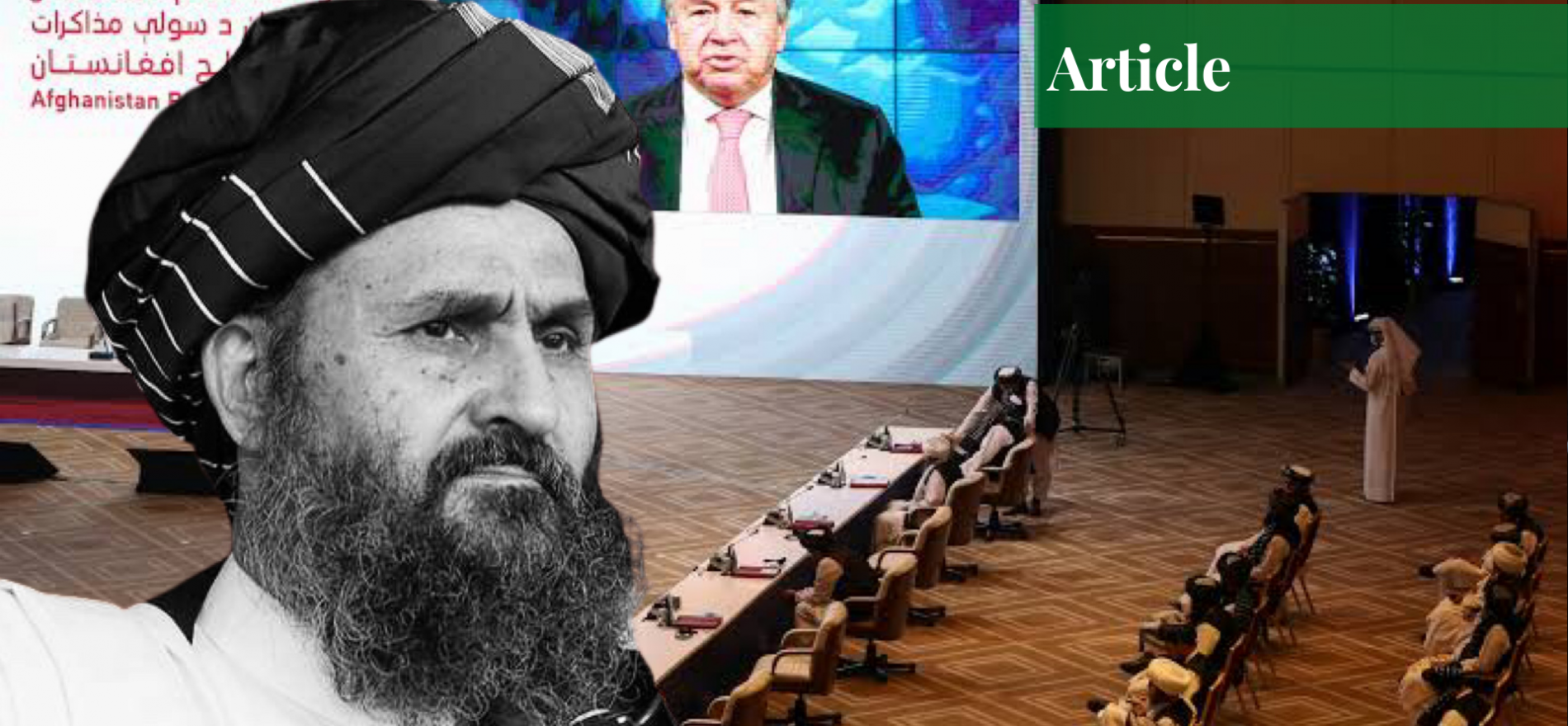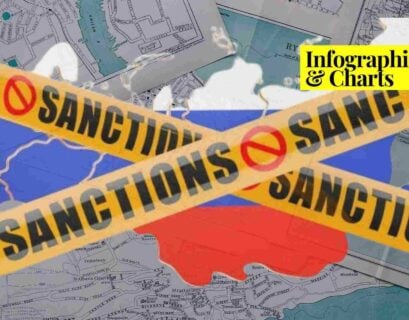Sarmad Ishfaq is an independent researcher and writer whose work has been published by Harvard Kennedy School Review, The Diplomat, Open Democracy, Paradigm Shift, Mondoweiss, and Eurasia Review to name a few. He has also been published by several international peer-reviewed journals such as Taylor and Francis' Social Identities. Before becoming an independent writer, he worked as a research fellow for the Lahore Center for Peace Research. He has a master's degree in International Relations from the University of Wollongong in Dubai where he was recognized as the 'Top Graduate'.
Introduction
Since the deal signed between the Taliban and the US on February 29, 2020, there has been much debate about the intra-Afghan peace process in the global discourse. Many, within and outside Afghanistan, remain skeptical if a deal can be finalized between the Taliban and the Afghan government, and if so, whether such a deal can be properly implemented. The paper comprises of a list of recommendations that seem to be the most important vis-à-vis the peace process. If these major recommendations can be followed, which appears unlikely, the peace process can have a real shot at proving functional.

Recommendation no. 1: The Taliban’s Inclusion
The Taliban is a reality. One cannot argue otherwise. No peace process can be successful without the Taliban. The pre-Trump US policies regarding the Taliban ranged from “the only good Taliban is a dead Taliban” (no negotiating with terrorists) to “there are good Taliban and bad Taliban”. Although there have been several attempts at negotiations, almost all failed before they even began. To an extent, the Obama administration as well as the incumbent Trump administration rightfully recognized that there is no military solution to the Afghan war and that the Taliban must be central actors in any intra-peace process.
The government of Afghanistan also realized that an already protracted war, which began in 2001 with the Taliban, does more harm than good. Conversely, the Taliban, who had previously rebuffed even the thought of negotiating with the Afghan government, have finally realized that an intra-Afghan peace process cannot work without the involvement of the democratically elected Afghan government. The Afghan government was not a participant of the February 2020 agreement as the Taliban considered the Ghani government illegitimate. This, however, later changed as the Taliban did begin negotiating with the government vis-à-vis prisoner swaps among other things.
In sum, the first recommendation is that for the peace process to have even a semblance of viability, the principal actors in the intra-Afghan process must be willing to negotiate with each other. This pre-requisite, although at times a bit wavered, is present currently – which means at least the foundation for peace talks is present. If one of the parties, however, rejects the other as a legitimate force, peace talks are bound to fail. In addition, any peace talk that is conducted without the Taliban or the Afghan government, the two major players, are an exercise in futility.
Recommendation no. 2: Co-existence Is the Elixir
One of the primary reasons for the intractability of the Afghan crisis stems from the diversity of the country. Afghanistan has four major ethnicities – Pathans, Tajiks, Hazaras, and Uzbeks. With respect to religion, Islam is predominant in the country, with there being three main sects – Sunnis, Shias, and Ismailis. The ethnic minorities are skeptical to see the Taliban in the government again as their previous experience with them had been bloody and traumatic.
The Taliban is comprised mainly of Pathans and during their former stint in government, many minorities became disgruntled with them due to their obstinate policies and hardline interpretation of Islam. One of the most affected minorities were the Hazaras. The leader of one of the Hazaras’ most influential political parties in Afghanistan, the HWI-MA (The Hezbe Wahdat led by Mr. Mohaqiq), told an audience in Islamabad that “peace is only possible if the conflicting sides can accept each other in every way.” The seasoned politician that he is, he made some excellent points, which must be taken with extreme seriousness. He stated that there are two ways to tackling diverse communities – the hard and soft approach.
The hard approach he mentioned is then the ruling party does not accept the diversity of cultures, ethnicities, religions etcetera, and so forcibly imposes its will on others. This approach he sagaciously stated never works in the long run. The soft approach has to do with “acceptance and tolerance” that was not shown to his people and others during the Islamic Emirate of the Taliban and that if the same mindset prevailed, Afghanistan will suffer another 30 years. The Hazaras are mainly Shia, while the Pashtun-dominated Taliban are Sunnis and this difference has resulted in bloody battles in the past. If the intra-Afghan peace process does miraculously work, and the Taliban see themselves in power in the future, peace can only be achieved when all ethnicities and people are accepted.
True peace will not be achieved via an American expulsion from the country, but instead when the Afghans can respect each other and coexist. Mr. Mohaqiq was of the opinion that the current Afghan system has religious pluralism installed in it, which has “placed personal laws for the sects” and so a “one size fits all” approach, like in the past, might be disastrous. The Hazara-Taliban example is merely one to illustrate the point of diversity and that every ethnicity must be included in the peace process. If they feel left out right now, how can they expect an Afghanistan which they can truly call home?
A committee should be created with respected members from all ethnicities as well as religious leaders so that issues of power-sharing in the future, women’s rights, and Islam’s role in Afghanistan, among others, can be fully addressed. This is easier said than done of course, but it is logical to get these integral issues sorted in the peace process, rather than dealing with them afterward, which would make it very complicated and would upset many Afghans. The reality is that there is no future of Afghanistan without the Taliban – the other reality is that there is no future of Afghanistan without everyone else. Therefore, everything comes down to “acceptance and tolerance.”
Recommendation no. 3: International Support
Although the peace process is intra-Afghan centric, this does not mean that neighboring and other countries cannot play a role to aid the process. Pakistan has been one of the most influential in the peace process and has shown its commitment to seeing a stable and peaceful Afghanistan. America has acknowledged Pakistan’s key role in bringing the Taliban and Americans together to reach a deal. Historically, Afghanistan has been a theater of proxy games and tactics, with India, Iran, Pakistan, Russia, and America all trying to achieve their vested interests. After decades, one thing is for sure: peace benefits not only Afghanistan but all countries, and the probability of success of the intra-Afghan process increases dramatically if all these countries were on a single page.
The Afghans should be the masters of their own destiny and the regional countries and extra-regional powers should follow Pakistan and America’s example and invest in the peace process rather than merely pushing the ‘supportive’ rhetoric. This will solidify the intra-Afghan peace process globally and would signal that no country is trying to exert its influence in Afghanistan. All countries must realize that a stable and peaceful Afghanistan is beneficial to all. For Pakistan, the cross-border issues of insurgents passing the Afghan border into Pakistan can be minimized or even be put to an end. For China, a stable Afghanistan is beneficial for its Belt and Road Initiative (BRI) – this also aids Iran and Pakistan which have extremely close ties with China and are massive partners in the BRI. For America, it means that Afghanistan cannot be reused to launch an attack against America.
These major regional powers and America should all come together to form a committee that aims to aid the intra-Afghan peace process however they can – but at the same time be careful not to hijack it. Afghanistan is a deeply fractured nation and the frailness of the current Afghan government, a coalition lacking strong leadership, as well as the volatility of the Taliban means that a helping hand from important powers is necessary for the dialogue to move in the necessary direction. This was true when the initial deal was signed between the Taliban and America where Pakistan and other countries played an important role.
Recommendation no. 4: Disarmament and Diligence
There are murmurings of segments in the Taliban that are completely opposed to negotiations. This would become problematic if the Taliban does decide to disarm and completely become a political player. All historical insurgencies from the Irish Republican Army in Northern Ireland to the National Liberation Army in Colombia that turned to politics had to disarm – but splinters that disagreed with their respective leadership emerged and continued fighting. Whether the Taliban can achieve success in the peace process without reducing violence and/or disarming will be quite a feat and maybe a first, but it seems highly unlikely. There must be a quid pro quo.
The Taliban realistically do need to end (or at least reduce) violence against the Afghan government in order to get what they want from the Afghan government and America – unless they plan to forcibly take everything. The Afghan government would be seriously questioned and undermined if they agree to a peace deal where the Taliban retain their weapons and are also free to contest elections. However, if the Taliban’s main leadership does agree to disarm (to a certain degree in the very least) it could upset many hardliners who are anti-negotiations. According to one commentator, “The insurgency is not a homogenous organization. It includes other insurgent groups, drug-trafficking organizations, tribes, and militia forces, some of which could strongly oppose a peace deal.”
The creation of Taliban splinter groups is a reality that is plausible – these splinter groups could make the pro-peace Taliban an enemy, which might start a new war. Another outcome could be that ISIS, which is looking to Afghanistan as a new center for expansion, can use the disenfranchised segments of the Taliban and recruit them. In summary, the Taliban must be willing to disarm if there is any chance for the intra-Afghan peace process to succeed. Furthermore, there must be a contingency plan in place for the Taliban defectors so they are not able to create discord using ISIS or otherwise and undermine the peace process. If the Taliban is sincere vis-à-vis the peace process, they along with the government must be cognizant of the probability of dissension and rebellion. These elements need to be kept in check or subdued by the Taliban – if not, they might ruin the peace process.
Recommendation no. 5: America as the Guardian
America should only exit completely when all parties have accepted a peace deal and a proper implementation plan is in play. A partial withdrawal, which has taken place, is fine and acceptable to the Taliban for the time being, but a complete exodus from the country before the intra-Afghan dialogue goes anywhere will end in disaster. Currently, due to public pressure back home as well as other pressing matters, American commitment to leave Afghanistan has never been higher. America, with the aid of Pakistan, Qatar, and others, was able to reach an agreement with the Taliban in February 2020. This was the first step in a long and perhaps tedious process that might last years. A complete American withdrawal could embolden the Taliban.
Many critics of the deal state that the Taliban is only currently playing nice because they see the imminent American departure a mile away. These same commentators cite that it would not be surprising if a forcible takeover of the government was attempted by the Taliban in the midst of a complete American withdrawal. The converse is where American indifference to the intra-peace deal and subsequent departure could lead to a more volatile Ashraf Ghani and/or Abdullah Abdullah. Earlier in March, Ghani stated that he would reject the prisoner exchange (in the peace deal) as the Afghan government was not a party to the deal. Things have changed since but a precipitous American departure could mean that Ghani and Abdullah Abdullah, the latter of whom is now in charge of the peace process, might back out citing a plethora of reasons.
In fact, the already shaky Afghan government coalition could prove problematic to the peace process if even one of the two gentlemen begins opposing the peace deal for whatever reason. Therefore, an American presence is needed to exert its influence on the Afghan government to remain steadfast until the peace process culminates. This does not mean that America should commandeer the peace deal, as some might say it has done so far, but try to keep both parties on the negotiation table. Concurrently, American presence will counter any surreptitious intentions that the Taliban might possess in event of a complete American departure. American assistance might also be needed during the implementation phase of the peace process such as development aid and keeping things steady.
Conclusion
These recommendations are some of the more pressing ones that need to be applied in order for the peace process to have any chance of success. Afghanistan has been at war since 2001 – negotiations in the past have failed and so has the American war against the Taliban and Al Qaeda. The war has been detrimental not only for Afghanistan and Pakistan but also for the region at large. This is the closest to a working peace dialogue that Afghanistan has ever seen, but this does not mean that it is guaranteed to work.
However, if all parties are flexible, the concerns of the Afghan people are addressed, and the aforementioned recommendations are implemented, the peace process might be successful – everyone seems to be hoping that this is true. Iqbal’s (R.H.) statement on the importance of Afghanistan resonates loudly today: “Asia is a body built of clay and water and Afghanistan is a heart in that body; if there will be peace in Afghanistan there will be peace in Asia; if there will be turmoil in Afghanistan then there will be turmoil in Asia.”
If you want to submit your articles and/or research papers, please check the Submissions page.



















